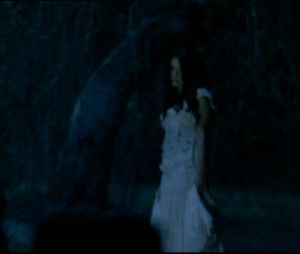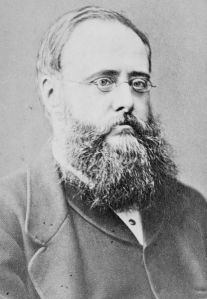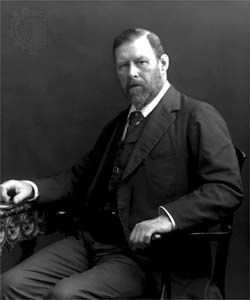For some reason, I sort of assumed that The Woman in White was a ghost story. You have to admit that the title lends itself to my assumption rather becomingly, and, besides, one of Supernatural’s episodes featured the urban legend of the ‘Woman in White’.
I know, I know – complete and utter fail.
Wilkie Collins is probably glaring down (up?) at me from the afterlife, and planning some sort of ghostly visit to put the fear of polygamous, Opium-addicted, Victorian bearded authors into me.
I don’t want to give too much of The (actual) Woman In White away – the plot is intricate, and I’m far too lazy to write it all out. Suffice to say, there were no ghosts involved.
But there was:
- A Woman in White (she had a proper name, although I’m rather fond of alliteration), who was assisted in escaping a mental asylum by…
- A lowly middle-class drawing master, who became besotted with …
- A genteel young woman who acted like soggy lettuce throughout the book, especially when confronted with…
- Her new husband, who connived to steal her fortune with…
- A suave villain of “immense corpulence”.
So – no ghosts, but the book was a preclude to modern detective fiction*, and was ridiculously suspenseful – a feat considering how long it was. Moreover, it was originally published in serial form**! I, for one, would have threatened Collins with forced helpings of morality plays until he agreed to provide me with the entire manuscript at once.
Halfway through the story – assuming, of course, I was successful in my endeavour of obtaining the manuscript – I would have nevertheless had to read in small increments due to the villains being super villainous. No, seriously, they enraged me. It took ages to get through a few chapters, just because I had to regularly calm myself down (I feel like Bram Stoker should take note, especially as all his villain ever did was study train timetables for years on end).
After I whipped out a bottle of smelling salts to compose myself, I realised that The Woman In White was the physical embodiment of Collins rolling his eyes at Victorian morals***.
Just like the gesture, the book’s message was subtle, and could be easily ignored should a dignified reader choose to do so. Still, a testament to Collins’ skill was the provision of a moral lesson from his villain – a fascinating character who argued against the widely held belief that the lower classes could help themselves out of poverty by simply being good.
Indeed, what I loved about Collins was his characterisation – that of the aforementioned villain, and especially that of a Mr Fairlie. Mr Fairlie pretended (believed?) he suffered from a nonexistent disease of the nerves, and wanted nothing other than to be left alone to his quiet tyranny. The following excerpt will expose you to everything I loved about Mr Fairlie:
“…The portfolio with the red back, Louis. Don’t drop it! You have no idea of the tortures I should suffer, Mr. Hartright, if Louis dropped that portfolio. Is it safe on that chair? Do you think it safe, Mr. Hartright? Yes? So glad. Will you oblige me by looking at the drawings, if you really think they are quite safe. Louis, go away. What an ass you are. Don’t you see me holding the tablettes? Do you suppose I want to hold them? Then why not relieve me of the tablettes without being told? A thousand pardons, Mr. Hartright; servants are such asses, are they not?…”
The end is nigh, and I think I will grant Mr Fairlie’s wish to have the last word…
Notes:
* Fun Fact #1: Edgar Allan Poe wrote the first ever detective story, which I reviewed here. It compares favourably to Collins, mainly because Poe’s criminal was a primate. In fact, Woman in White was one of the first books to be dubbed a ‘sensation novel’ – a kind of fusion between detective and suspense fiction. The sensation novel described shocking acts in domestic and everyday settings.
** Fun Fact #2: The editor of the periodical that published Woman in White was none other than Charles Dickens, Collins’ significant other in a serious bromance.
*** Fun Fact #3: Collins was quite the bohemian; he famously refused to marry, lived for many years with his mistress, had children with his next-door neighbour, and enjoyed a polygamous relationship with both women (polygamous on his side, not entirely sure how they felt about each other).













 Stumble It!
Stumble It!